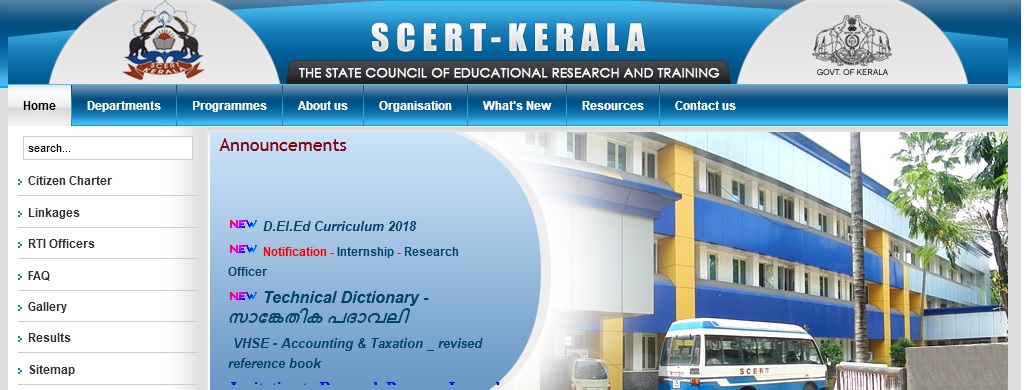SCERT Kerala Class XII Sociology Sample Question Paper 2015
Organisation : State Council of Educational Research & Training
Exam : Higher Secondary Education Exam
Subject : Sociology
Document Type : Sample Question Paper
Year : 2015
Class : XII STD
Website : http://www.scert.kerala.gov.in
Download Sample Question Paper : https://www.pdfquestion.in/uploads/8431sociologyxii.pdf
SCERT Sociology Class XII Sample Question Paper
Time: 2½ hrs
Maximum : 80 Score
Related : SCERT Kerala TET Sample Question Paper 2012 : www.pdfquestion.in/8426.html
General Instructions to candidates :
** There is ‘Cool off time’ of 15 minutes in addition to the writing time of 2½ hrs.
** You are neither allowed to write your answers nor to discuss anything with others during the ‘cool off time’.
** Use the ‘cool off time’ to get familiar with questions and to plan your answers.
** Read the questions carefully before answering
** All questions are compulsory and only internal choice is allowed.
** When you select a question, all the sub-questions must be answered from the same question itself.
** Calculations, figures and graphs should be shown in the answer sheet itself.
** Malayalam version of the questions is also provided.
** Give equations wherever necessary
** Electronics devices except non programmable calculators are not allowed in the Examination Hall

1. See the data relating to the age structure of India’s population (in percentage) as per 2011 census. Choose the most appropriate statement relating to the age structure of Indian population.
a) Majority of Indian people will get aged very soon
b) India has the advantage of demographic dividend
c) Birth rate is declining
d) Declining death rate
2. Unequal access to social resources is commonly called —————- (1)
a) Social inequality
b) Social plurality
c) Social stratification
d) Social struggle
3. Identify the statement that cannot be considered as the social consequence of green revolution. (1)
a) Increasing inequalities in urban areas
b) Displacement of service caste groups
c) Increase in the employment and wages of agricultural workers
d) Worsening of regional inequalities
4. i) Landless migrant workers are also called ———————-
a) Competent labour
b) Labour power
c) Intellectual labour
d) Footloose labour
ii) How does this phenomenon lead to feminisation of agriculture (1 + 3)
5. Evaluate the role of common sense in the learning of sociology.
6. Secularism in India is different from that practiced in the west. Substantiate (2)
7. Select the most appropriate statement regarding industrialisation in India during the British period. (1)
a) There was a sudden move of workers to the new industries in the initial period
b) The initial impact of industrialisation led to more people moving into agriculture
c) Industrialisation took place in the same way as it happened in Britain
d) The British policies favoured native tea planters
8. Analyse any two situations mentioned by M.S.A Rao as the impact of urbanisation (2)
9. Write down any four identities that may locate you in a social map (2)
10. i) The companies that produce goods or market services in more than one county is referred as ——– (WTO, IMF, TNC, SBTC)
ii) Discuss the impact of liberalisation on Indian economy. (1 + 4)
OR
i) ————– is the strategy adopted by foreign firms while dealing with local traditions in order to enhance their marketability.
ii) Explain the role of cultural consumption in the process of globalisation in our community. (1 + 4)
Hints:
a) Food b) Fashion
c) Art d) Tourism
11. Caste groups are ——————— Choose the distractor that does not go along with the statement. (1)
a) indigenous b) endogamous
c) exogamous d) social institution
12. i) The number of females per 1000 males in a given area at a specified time period is known as ————-
ii) India’s census shows that in many states the sex ratio is declining. Write down the reasons for this trend. (1 + 4)
13. i) The term status symbol was coined by ———————-
a) Karl Max
b) Emile Durkheim
c) Max Weber
d) Herbert Spencer
ii) Explain the symbolic meaning of consumption in modern society.
iii) Examine the sociological significance of studying consumption. (1+2+2)
14. Do you think that the emergence of electronic media has changed the role of print media? Substantiate your answer. (2)
15. Gender and disabilities generate social in equalities and exclusion. Analyse with examples. (Your answer should not exceed 200 words) (7)
16. ‘Changes in public sphere of life do make changes in the private sphere of life.’ Analyse the statement considering family as an institution in the private sphere of life. (4)
17. i) Jawaharlal Nehru considered media as the watchdog of ………………
ii) Explain the role of mass media in the early years of Indian independence. (1 + 2)
18. Give two examples for the influence of British colonialism on the structure of Indian society. (2)
[embeddoc url=”https://www.pdfquestion.in/uploads/8431sociologyxii.pdf”]
How does this phenomenon lead to feminisation of agriculture?